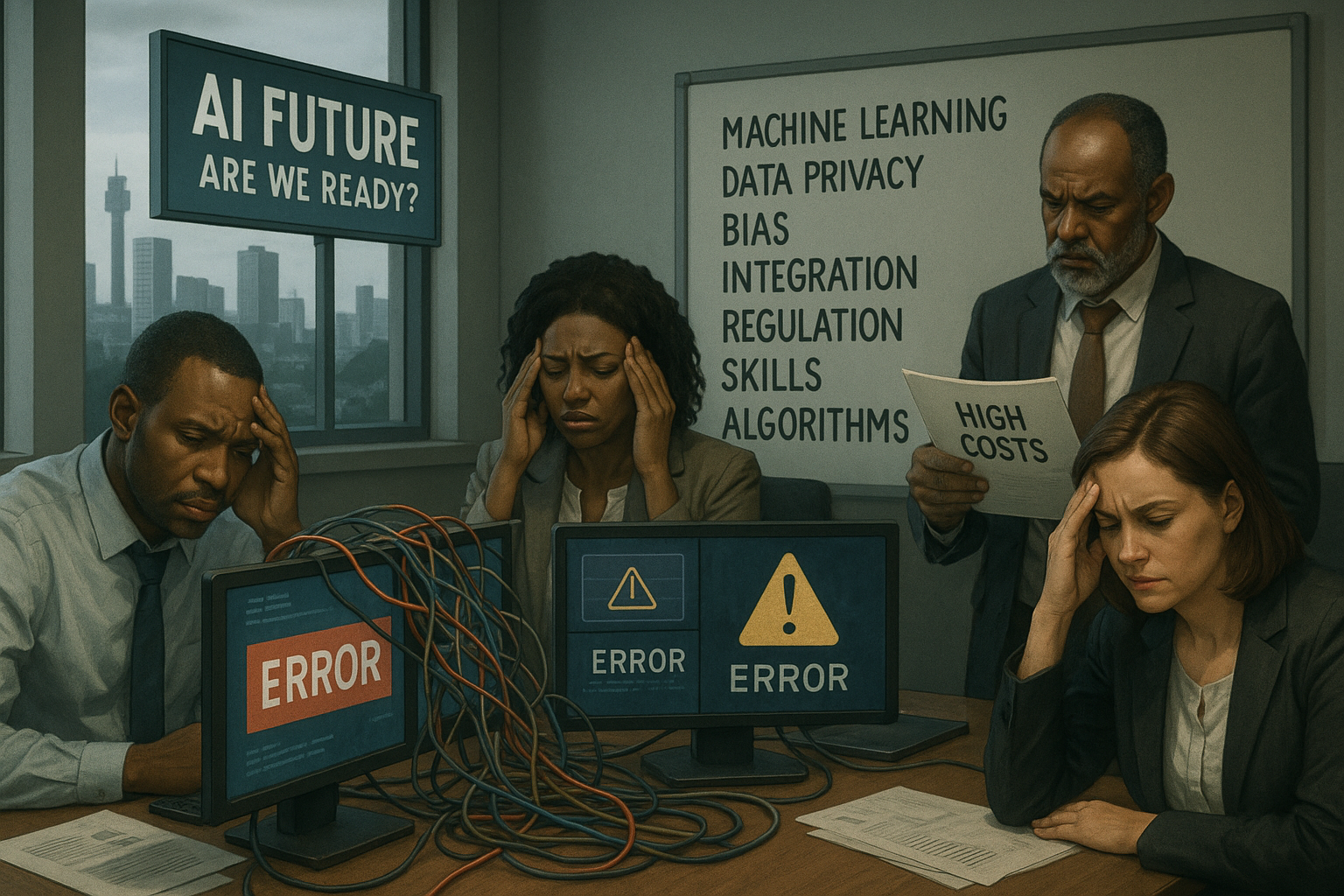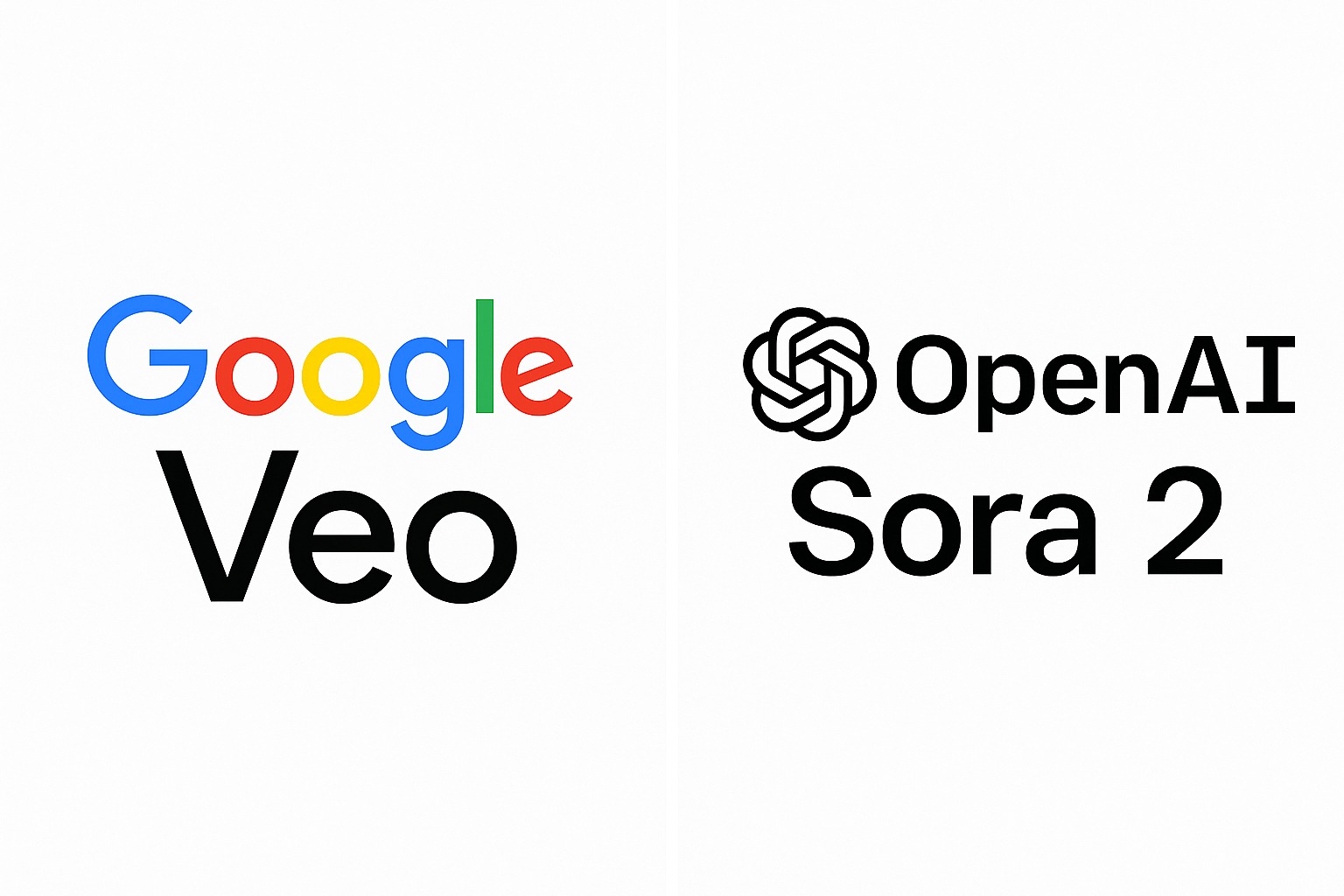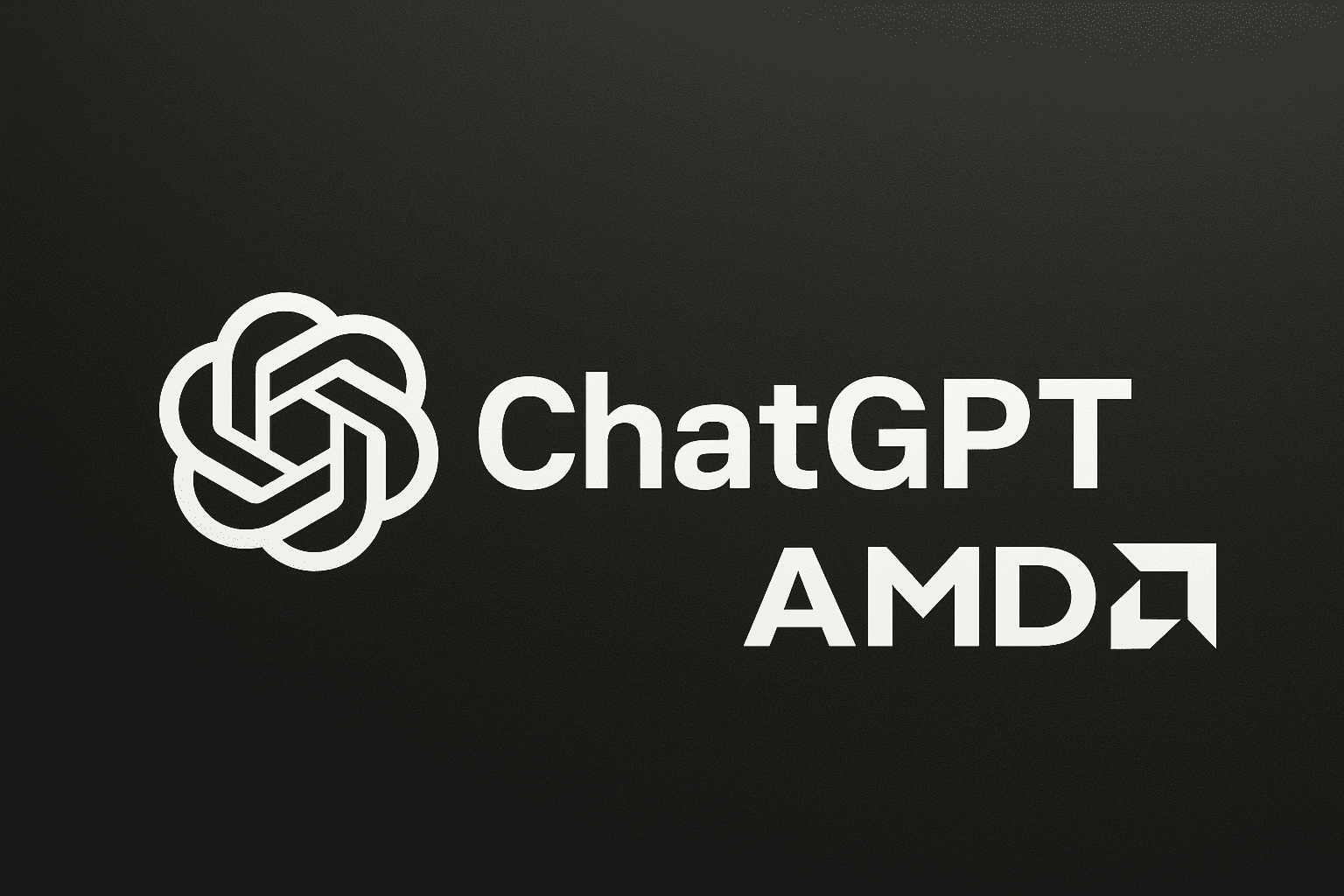AI Adoption Challenges Facing SA Businesses in 2025

AI Adoption Challenges Facing SA Businesses
South African workers are actually ahead of the curve when it comes to using AI tools. Over 60% are regular users of generative AI, with 21% integrating these tools into their daily work routine. This level of adoption in the workforce puts South Africa ahead of many developed countries like France (41%), the United Kingdom (44%), and even the United States (46%).
Despite this impressive grassroots enthusiasm, a significant gap exists between individual AI usage and successful AI adoption by businesses in South Africa. The AI adoption challenges facing South African companies are real, impactful, and are costing businesses millions.
The AI market in South Africa is projected to hit R6.9 billion by 2025. That’s a substantial figure, yet many businesses are struggling to translate their AI investments into tangible results and capture their share. Why is this happening? Let’s dive into the core obstacles hindering AI implementation in South Africa.
The AI Paradox: Why South African Businesses Struggle with AI Adoption
Let’s address the peculiar situation in South Africa regarding AI. On one hand, our workforce is a global leader in utilizing AI tools personally. On the other hand, many companies are finding their AI projects failing to deliver expected returns.
It’s akin to owning a powerful sports car but lacking the expertise to drive it effectively. The AI tools are accessible, employee interest is high, but the ability to scale AI across business operations and achieve real business value remains elusive for many South African enterprises.
Consider your own workplace: you likely have colleagues using ChatGPT for email drafting or idea generation. Your marketing team might be experimenting with AI-powered design. However, the true hurdle emerges when attempting to integrate AI throughout your entire organization, making AI deployment a complex task.
Where Different Industries Stand on AI Integration
AI adoption varies significantly across sectors in South Africa. Financial services and telecommunications are well into their AI journey, leveraging it for fraud detection and enhancing customer service. This makes sense, given their existing infrastructure and capital.
Manufacturing and agriculture are still in earlier stages. Some farming operations are piloting AI for crop monitoring, and manufacturers are exploring predictive maintenance. These sectors represent significant AI growth opportunities but face unique AI implementation challenges.
Retail has quickly adopted AI for inventory management and personalized marketing. Healthcare, while more cautious due to regulatory and ethical considerations, is gradually incorporating AI for diagnostics and patient management. Each industry navigates its own pace and unique AI adoption hurdles.
The Skills Gap: A Major Barrier to AI Adoption in South Africa
The Talent Hunt is Real
A critical reality for AI adoption in South Africa is the severe shortage of skilled AI professionals. Demand has skyrocketed, but the supply of qualified data scientists, machine learning engineers, and AI specialists has not kept pace. This imbalance leads to intense competition for talent and inflated salaries, creating a significant AI talent crunch.
Companies are often vying for the same limited pool of AI expertise, akin to a high-stakes game of musical chairs. This AI skills shortage isn’t merely an inconvenience; it stands as one of the most substantial AI adoption challenges for South African businesses. Acquiring advanced AI software is futile without the skilled personnel to implement and maintain it effectively.
Microsoft’s Significant Contribution (And Why More is Needed)
Microsoft deserves commendation for actively addressing this issue. The tech giant has announced ambitious plans to equip 1 million South Africans with in-demand digital skills by 2026 through their AI skilling initiative. This is a massive undertaking, but even with such impressive goals, it’s insufficient to meet current demand for AI-ready workforce.
The mathematics are clear: businesses need skilled AI professionals faster than current training initiatives can produce them. Bridging this AI talent gap will take years, necessitating multiple, diverse initiatives beyond any single corporate effort.
Smart Companies Are Building from Within
The most astute businesses aren’t passively waiting for the ideal AI candidate. They are proactively upskilling their existing teams. This approach makes strategic sense: current employees already possess invaluable business context, customer understanding, and process knowledge. Equipping them with AI skills is often more effective than bringing in external talent who lack industry-specific insights.
Some companies are forging partnerships with universities to develop specialized AI training programs. Others are investing in intensive courses for key personnel. While this represents a significant investment, it’s proving highly rewarding for those committed to developing an internal AI capability.
Infrastructure Headaches: Load Shedding and Internet Connectivity Impact AI
The Power Problem
The most visible AI adoption challenge in South Africa is load shedding. Running sophisticated AI systems requires consistent power, a luxury often unavailable. Many businesses have had to invest heavily in backup power solutions and robust cloud infrastructure purely to sustain their AI projects.
This isn’t just about keeping computers on; AI applications demand uninterrupted power for crucial tasks like training complex models, processing large datasets, and conducting real-time analytics. When Eskom interrupts the power supply, AI development and operations inevitably cease.
The Digital Divide: Impact on AI Access
While major urban centers like Cape Town, Johannesburg, and Durban generally boast reliable internet connectivity, businesses operating outside these hubs face significant disadvantages. AI applications are bandwidth-intensive, and many rural areas still contend with slow or unreliable internet, exacerbating the AI digital divide.
Rural businesses are severely hampered in their attempts to implement AI solutions due to inadequate internet speeds. This creates a two-tiered system where urban enterprises can readily embrace AI transformation, while rural counterparts risk being left behind in the AI revolution.
The Cloud Solution (and its trade-offs)
Many businesses are migrating their AI workloads to cloud services to circumvent local infrastructure limitations. This approach offloads the burden of server management and power supply to providers like Microsoft, Amazon, or Google. However, it introduces other considerations such as data sovereignty issues, compliance complexities, and potentially high ongoing costs.
A hybrid cloud approach appears to be the most practical strategy for many South African businesses. This involves maintaining sensitive data on-premises while leveraging the cloud for computationally intensive AI tasks. This offers a balance, albeit with increased management complexity.
Money Talks: The Real Cost of AI Implementation
The Sticker Shock of AI Investment
Many businesses are caught off guard by the true financial scope of AI implementation. A project initially estimated at R500,000 could easily escalate to R2 million or even R5 million. Initial quotes often fail to account for the full spectrum of costs.
These include licensing fees, infrastructure upgrades, comprehensive training expenses, and complex system integration. Additionally, there are often hidden costs: data cleaning, ongoing maintenance, and extensive staff training, which can readily double the initial budget for AI projects.
The ROI Question for AI Adoption
Chief Financial Officers (CFOs) demand clear returns on investment. With AI, quantifying ROI can be challenging. How does one precisely measure the value of enhanced customer insights or improved decision-making? Attaching a specific rand value to many AI benefits isn’t always straightforward.
Successful businesses establish clear, measurable goals before embarking on AI initiatives. They meticulously track specific metrics like cost savings, productivity improvements, or direct revenue increases. Companies that neglect this upfront planning often struggle to justify their AI investments during budget reviews.
Creative Funding for AI Projects
Fortunately, there are avenues to fund AI projects without prohibitive costs. The Industrial Development Corporation offers technology adoption funding. Some businesses initiate AI pilot projects to demonstrate value before scaling. Others collaborate with technology providers willing to share AI implementation costs.
Phased rollouts also prove effective. Starting small, validating the concept, and then expanding reduces risk compared to a large, all-or-nothing AI investment.
Regulatory Maze: Navigating New AI Rules in South Africa
The National AI Policy Framework: A Game Changer
In 2024, South Africa introduced its National AI Policy Framework. This framework champions “human-centered AI,” aiming to balance innovation with ethical considerations. While conceptually sound, it introduces new compliance requirements for businesses engaging in AI deployment.
The framework places emphasis on social and economic impact, compelling companies to consider more than just profit when implementing AI. Businesses must now account for how their AI systems affect employees, customers, and society, adding a layer of complexity to AI strategy.
POPIA Compliance Gets Complicated with AI
The Protection of Personal Information Act (POPIA) was already a significant compliance hurdle before AI became prevalent. Now, businesses must devise strategies to train machine learning models while strictly adhering to data protection requirements. This necessitates meticulous planning and often, legal expertise.
Every AI system that processes personal data must be POPIA-compliant. This involves a deep understanding of what data is collected, how it’s used, and ensuring appropriate consent. It’s a time-consuming and potentially expensive process, but it’s a non-negotiable aspect of responsible AI adoption.
Industry-Specific Regulatory Hurdles for AI
Different industries encounter unique regulatory challenges with AI. Financial institutions must align their AI for fraud detection with financial services regulations. Healthcare providers must meet stringent medical device standards for AI diagnostic tools. This adds distinct layers of complexity to AI projects across sectors.
People Problems: Overcoming Resistance to AI Adoption
The Fear Factor and Employee Resistance to AI
A significant human element in AI adoption is employee apprehension. Many workers fear job displacement by AI, seeing AI-powered chatbots taking over customer service roles and wondering about their own future. This fear generates resistance that can stifle AI initiatives before they gain momentum.
The solution isn’t to disregard or dismiss these concerns. Effective leaders address them directly, explaining how AI will augment human capabilities rather than replace them. They demonstrate how AI can automate routine tasks, freeing employees for more strategic and fulfilling work.
Leadership’s Role in Successful AI Implementation
AI adoption is not solely a technological challenge; it is fundamentally a leadership challenge. Companies with strong, visible leadership support for AI initiatives typically achieve success. Those lacking such backing often falter.
Leaders must champion AI projects, allocate necessary resources, and foster organizational cultures that embrace innovation with AI. They need to be prepared to invest in training, accept occasional setbacks, and maintain momentum even when challenges arise.
Managing AI Hype vs. Reality
One of the significant AI adoption challenges is managing expectations. AI is not a magical panacea that will instantly solve all business problems. However, the pervasive hype around AI often cultivates unrealistic expectations, leading to disappointment and skepticism.
Successful companies maintain a realistic perspective on AI limitations. They set achievable timelines, celebrate incremental wins, and prioritize practical applications over attempting to implement every theoretical AI capability simultaneously.
Making AI Work: Strategies of Successful SA Businesses
Start with Strategy, Not Technology
Businesses that excel with AI don’t begin by purchasing software. They start by thoroughly understanding their core business problems and identifying precisely where AI solutions can provide the most value. It’s strategy first, technology second—a fundamental principle for successful AI adoption.
They conduct comprehensive assessments of their current capabilities, pinpoint specific use cases, and develop realistic implementation plans. They consider skills, infrastructure, and organizational readiness before making any significant investment in AI tools.
The Power of Partnerships for AI Growth
No organization succeeds with AI in isolation. The smartest businesses forge strategic partnerships with technology providers, universities, and other companies. These collaborations provide access to crucial expertise, resources, and best practices that would be difficult to develop internally, accelerating AI development in SA.
Local partnerships are particularly valuable due to their understanding of the unique South African market context. International partnerships offer access to cutting-edge AI technology and global expertise. The most effective businesses leverage both.
Invest in Your People for AI Readiness
Technology represents only one component of the AI puzzle. The true investment must be directed towards people and processes. Companies require comprehensive AI training programs, new governance frameworks, and organizational structures designed to support AI initiatives.
The most successful South African businesses view AI adoption as a long-term transformation journey. They commit to continuous learning, adaptation, and improvement. They don’t anticipate instant results; instead, they plan for sustainable, long-term success with AI.
The Bottom Line: AI Challenges Are Real, But Beatable
The AI adoption challenges facing South African businesses are indeed significant. Skills shortages, infrastructure limitations, regulatory complexity, and cultural resistance are formidable obstacles that can derail AI projects.
However, these challenges are not insurmountable. Companies that approach AI implementation with realistic expectations, robust strategies, and strong leadership can overcome them. The key is understanding that AI adoption is a marathon, not a sprint.
Success demands patience, sustained investment, and a willingness to learn from inevitable mistakes. The businesses that master this will gain significant competitive advantages as the AI market in South Africa grows toward that projected R6.9 billion by 2025.
The window of opportunity for AI leadership in South Africa is open, but it won’t remain so indefinitely. Early adopters who successfully navigate these challenges will be the ones positioned to dominate their respective industries in the coming years.





